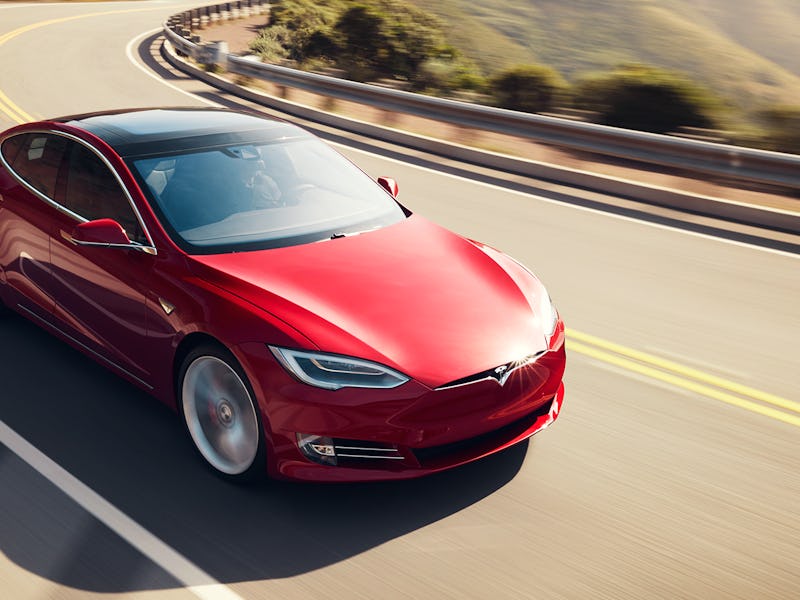Tesla Model S and X range boosts make their way into software update
The electric vehicles are moving further than ever before.

Tesla's Model S and Model X are receiving range boosts for their in-car displays, it emerged this week. A new software update tweaks the cars' number of remaining miles to more accurately reflect reality, after previous updates managed to squeeze more performance out of the vehicles' batteries.
CEO Elon Musk shared a Teslarati article Wednesday that highlighted the change. The software update, version 2020.4, increases the Model X stated range from 328 miles to 351 miles and the Model S from 373 miles to 390 miles. The latter vehicle remains the Tesla with the highest range, and makes good on Musk's January promise that the Model S is "rapidly approaching a 400-mile range." The Model S' advertised range, as set by the Environmental Protection Agency, was raised to 390 miles on February 15.
Tesla fans on Reddit reported seeing boosts after the software update. A user called "sudogreg" claimed their Model X, delivered in February 2020, showed 354 miles at 100 percent battery and 316 miles at 90 percent battery.
It's a welcome boost for existing owners, particularly as range anxiety remains a key concern for new car buyers. Unlike a gas car that can move for hundreds of miles and refill in minutes almost anywhere, electric cars require new infrastructure and can take much longer to recharge. Timings have gradually reduced, with the third-generation Tesla supercharger adding 180 miles to a Model 3 in 15 minutes. However, a Volvo survey in February 2019 found 58 percent of non-electric drivers are worried about losing power before they can reach a charging point.
It's important to note, however, that the new software update doesn't physically make the cars move any further. These boosts have gradually worked their way into new vehicles moving off the production line. The new update simply updates the in-car display to better reflect the real-world range.
"All S/X cars made in recent months have actually been above stated EPA range. Will be unlocked soon for free via software update," Musk wrote on February 15. "Many small hardware improvements throughout the car that have been introduced gradually over past several months. Software just thinks the car is less efficient than it actually is."
Tesla Model X.
Tesla previously rolled out a software update that boosted the range on existing vehicles. An update in early 2019 increased the range of the long-range rear-wheel drive version of the Model 3 from 310 to 325 miles. During the company's third-quarter earnings call in October 2019, Musk also revealed that an update would optimize the car's motor controls and boost power by five percent for the Model 3 and three percent for the Model S and X.
The Model 3, which is currently the company's cheapest car with a starting price of $35,000, has also seen a range boost in recent months. In a February third-party analysis, the long range Model 3 reached 350 miles between charges despite only advertising with 310 miles of range.
The Inverse analysis
These are the sort of boosts that will appeal to the average consumer, whether or not they actually need the extra range.
Most drivers are unlikely to experience the difference on a daily basis, considering the average American commute is only around 30 minutes. But these sort of range boosts can help answer concerns about range anxiety, unlocking longer road trips. Doug Alfaro, a former Tesla regional manager of charging infrastructure, told Inverse last month that part of the goal for the supercharger network was to power the "emotional parts of vehicle ownership" like long-distance family trips.
Tesla has big plans to raise these figures further, with the likes of the 500-plus-mile Cybertruck and 620-mile Roadster launching in the next two years. But considering how rare it is to actually drive that sort of distance without taking a pit stop, its biggest value may be in changing consumer perceptions than enabling new possibilities for road trips.